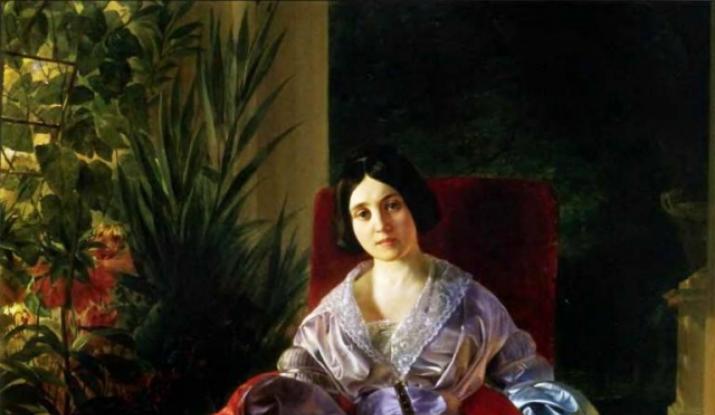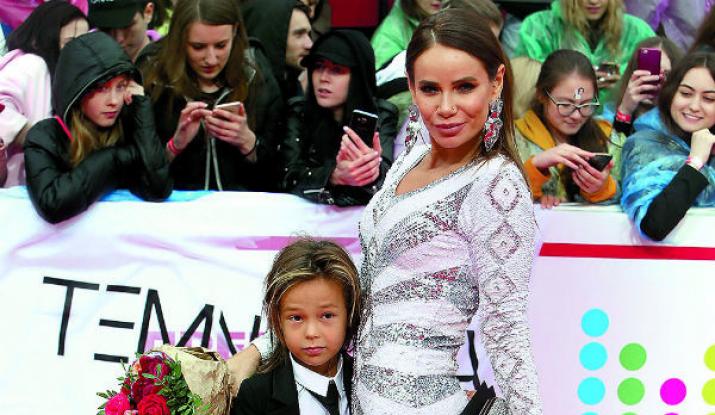Very often needlewomen may be faced with the fact that all sorts of necessary little things are not very conveniently stored. For example, buttons, coils, pins are always lost in large storage boxes. In addition, it is very inconvenient to engage in sewing when you have to look for needles for a long time. In such cases, the crochet box comes to the rescue, the description of which the site Knitted Tale offers you in this master class.
For a knitted box you will need:
- putty bucket
- skein of white acrylic
- hook.
- In the manufacturing process, colored threads were also used to knit decor such as "iris" and a little synthetic filler.
Crochet box. Process description
We start knitting any circle with a sliding loop. This is the most convenient way. We knit 15 columns with one crochet on it, and tighten it. Then, evenly adding loops around the circumference, we knit several circular rows. Each time we try on a connected circle to the inner bottom of the bucket.
Having tied the circle to the required diameter, we make one row without increments. But the hook is entered not under the entire loop of the previous row, but only behind its back wall. Therefore, the lapel is clear.
Then we crochet several more rows with single crochets without increments to tie the bucket in height. To make it convenient to connect parts in the future, we add 2 more circular rows with minimal expansion (a few loops around the entire circumference) to the inner part of the strapping.
External binding knits in the same way, but without additional 2 rows. As you can see in the photo, the outer part is slightly lower than the inner one.
To tie the lid we knit 2 circles, but one is flat and the second is slightly convex. At the top of the bucket we’ll do something like a needle bar.
We connect the details of the lid, we tie it around the circumference.
Reaching the middle, we insert the lid itself for rigidity and add synthetic filler to the top.
We connect together the details of the strapping of the bucket itself and the bucket, add a little filler to the outer part and sew everything with a needle.
And then we sew the lid.
Description of knitted decor for casket
With the same sliding loop with 10 SC, we make the middle of the flower. Then we knit three circles, evenly adding loops to every second loop of the previous row.
Then, to expand the circle and create the appearance of the petals, we knit the next 3 rows, 2 loops in each column.
Then again we knit 3 rows without increments.
We tie the flower with a contrasting color, and add a knitted circle to the center.
To make the box more contrast, I knit flowers in two shades.
When the whole decor is ready (we have 9 flowers), we sew them along the edge of the box, alternating colors.
Sew a flower to the top of the lid (by the way, a more detailed workshop on knitting a flower can be seen
It is even more convenient if it is divided into sections where you can separately store their different types - earrings with earrings, beads - with beads, rings - with rings. But sometimes there are so many of them that you simply can’t do without an additional box. This is especially true for small jewelry (rings, earrings), which often like to get lost among other jewelry. Prepared a knitting workshop.
Crocheted jewelry box "Apple"
For knitting jewelry box we will need:
1) Yarn of medium thickness green;
2) Yarn “Iris” is dark green;
3) Hook number 1;
4) Yarn "Jeans" black;
5) A needle with a thread;
6) Scissors.
We hook onto a chain of 4 air loops of light green yarn. We knit the first and second rows with single crochet, and in each loop of the previous row we knit one addition, that is, in one loop there should be two single crochet.

We also knit the following rows with single crochet, but we do not add any more to each loop. With each row, the interval between additions is increased, the further the row, the greater the gap. For example, in the third row of additions, we knit through 2 loops, in the fourth - through four and so on. We knit in this way another 3-4 rows.

After knitting these rows, we stop doing the reductions and we knit one row simply with crochets. This will allow the knitting to bend slightly around the edges and gradually take on the shape of a ball.

Then we continue to knit single crochet in a circle, in each row doing 2 additions, so that the knitting expands upward. We knit so 4-5 rows. You will get a product that resembles a bowl.

We knit such "bowls" 2 pieces. Their diameters must match.

Now we apply two details of the apple so that their wrong sides are facing each other and we knit 5 SC, along their edges, knitting these parts together.

As a result, you get such a ball.

Now cut the yarn from a ball of black yarn “Jeans” about 0.3 meters long and fix it on the wrong side of the upper part of the apple. We pull the thread to the front side in the center of the part. We knit 10-12 air loops.

On a knitted chain we knit 10-12 single crochet.

We fix the "stalk" of the apple to the top, stretching the rest of the yarn to the wrong side and tying a bundle.

To bind the petal, the Iris yarn is folded in half, and then we knit 13 air loops.

We knit the first side of the leaf according to this pattern: 1 connecting post, 2 single crochet, 2 double crochet, 3 double crochet, 2 double crochet, 2 single crochet, 1 single crochet

Next, go to the opposite side of the chain, knitting at the end of 3 single crochet in one loop, and then on the same side we also knit the second part of the leaf. At the end we pull the thread and hide it on the wrong side of the leaf.

Sew the leaf to the handle. Knitted jewelry box is ready.


Do you like the product and want to order the same from the author? Write to us.
More interesting:
See also:
Brags of Olga Arisep: products for the home
Dear readers, today I want to wish Olga Arisep happy birthday to you! Olga is already a choir ...
How to make a candlestick in 5 minutes
A small but interesting master class was sent by Xan Merck on how to make a candlestick for your own hands ...
Volumetric picture "from fabric. Pot of flowers"
Name: Workshop on needlework. Title. Volumetric painting "Pot of Flowers"
Step-by-step workshop on creating a frame for felt photos
Another master class of our beloved author Antonina Mazur - frames for photos from felt. From felt you can ...
Diameter 18 cm.
Materials for work.
The box is crocheted of Vita Coco yarn 100% mercerized cotton (240 m / 50 g), it took about 30 g of white and about 10 g of red.
Hook number 1.5.
The diameter of the box is about 18-19 cm, height 5 cm.
First of all, decide on the form on which you will pull the box. My form was an ordinary kitchen pan.
We will start by knitting the cap.
Row 6: 






Our cap is ready.
We start knitting the bottom, it should turn out a little smaller in diameter than the lid.
We will knit according to this pattern: 
9 row: 3 in. item, art. s / n in the same base loop, 7 tbsp. s / n, * increase (2 tbsp.s / n in one loop), 7 tbsp. s / n *, repeat from * to the end of the row, finish the row conn. Art.
10 row: 3 in. item, art. s / n in the same base loop, 8 tbsp. s / n, * increase (2 tbsp.s / n in one loop), 8 tbsp. s / n *, repeat from * to the end of the row, finish the row conn. Art.
11 row: 3 in. item, art. s / n in the same base loop, 9 tbsp. s / n, * increase (2 tbsp.s / n in one loop), 9 tbsp. s / n *, repeat from * to the end of the row, finish the row conn. Art.
12 row: 3 in. item, art. s / n in the same base loop, 10 tbsp. s / n, * increase (2 tbsp.s / n in one loop), 10 tbsp. s / n *, repeat from * to the end of the row, finish the row conn. Art.
The bottom is ready.
The finished box is very starchy. The lid can be pulled over the same shape as the bottom, after having previously wrapped the edges of the mold (for example, corrugated cardboard) in order to increase its diameter. After the box is dry, you can decorate as you want.
I starch about 1.5 tablespoons of starch into a glass of water.
Here are some more tips from the Internet: you can starch with pva, dilute 1: 1 with water, soak in glue, squeeze, put on a uniform. a very dense box is obtained.
A lot of things can be crocheted, including caskets. Fishnet crocheted caskets decorate your room and become an interesting highlight of your interior. Also, the box can serve as a pleasant gift for your friends and relatives. In such a box you can store various little things, jewelry and even sweets.
In this master class, we will learn how to knit such a box.
Materials for work.
The box is crocheted of Vita Coco yarn 100% mercerized cotton (240 m / 50 g), it took about 30 g of white and about 10 g of red.
Hook number 1.5.
The diameter of the box is 19 cm, height 5 cm.
First of all, decide on the form on which you will pull the box. My form was an ordinary kitchen pan.
We will start by knitting the cap.

We recruit a chain of 12 v.p. and close it in a ring with the help of connections. column.

1 row: we knit 3 VPP and 23 tbsp. s / n in the ring.

2 row: 4 c.p., 1 tbsp. s / n in the art. s / n of the previous row,


We knit 1 more. Art. and start knitting 3 rows.
3 row: 3 vp,

1 tbsp. s / n (we introduce the hook into the arch),

1 tbsp. s / n in the art. s / n previous row


then 1 c.p. * 2 tbsp. s / n in the next arch, 1 tbsp. s / n in the art. s / n previous row, 2 tbsp. s / n in the foot of the arch, 1 vp *. Repeat from * to the end of the row. We close a number of connections. Art.

4 row: 3 vp and 4 tbsp. s / n we knit together (with a common vertex)



5 tbsp. s / n with common top *

Repeat from * 10 times. We complete the series with the help of 2 vp and a column with 3 / n


5 row: we attach a white thread and knit 2 vp and 6 bust. s / n in the arch,

we knit * 13 half. s / n in the next arch *

Repeat from * 10 times. Then we knit 6 half. s / n in the first arch and close the row of connections. Art.

6 row: we knit 5 VP,

4 tbsp. s / n we knit in 3 from the hook a loop of a connected chain

Now, let's take a closer look at knitting the next element, we knit st. with 2 / n.

make 1 yarn and insert the hook into the lower crossbar of art. s 2 / n,

pull the loop

and knit the usual art. s / n

We knit another 3 tbsp. s / n, introducing the hook at the same puncture point.

We continue knitting these elements to the end of the row. We knit 3 elements in the middle (upper) half-column with / n before. row. We close the row with the help of compounds. column.

7 row: 3 vp and 4 tbsp. s / n we knit together (with a common vertex),



5 tbsp. s / n with common top *

We continue from * to the end of the row. We close the row using 2 vp and Art. s / n


8 row: 6 C.P., Art. b / n in the middle loop of the arch from VP before row

* 5 c.p.Art. b / n in the middle loop next arches *

Repeat from * to the end of the row. We close a number of 2 vp and Art. s / n

9 row: 2 vp, 2 polust. s / n in the arch,

* 5 half bust. s / n in the next arch *.

Repeat from * to the end of the row. We complete row 2 of the bust. s / n connected in the first arch and conn. Art.


10 row: in each polust. s / n of the previous row we knit art. s / n
11 row: 4 vp, skip 1 loop and knit st. s / n, * 1 vp, skip 1 loop, 1 tbsp. s / n *, repeat from * to the end of the row, then 1 vp and connection. Art.
13 row: we knit as 12 row.
Our cap is ready.
We start knitting the bottom, it should turn out a little smaller in diameter than the lid.
We will knit according to this pattern.

When knitting the bottom, we will make uniform increases in each row (12 tbsp. S / n in each row)
We collect a chain of 6 vp and close it in a ring with the help of connections. Art.

1 row: we knit 3 VP and 11 tbsp. s / n in the ring. We close a number of connections. Art.

2 row: 3 vp, 1 tbsp. s / n in the same base loop, then in each loop we knit 2 tbsp. s / n

3 row: 3 c.p., 1 tbsp. s / n in the same base loop, then 1 tbsp. s / n, then increase (2 tbsp. s / n in one loop), so we alternate to the end of the row. We close a number of connections. Art.

4th row: 3 c.p. s / n in the same base loop, 2 tbsp. s / n, * increase (2 tbsp.s / n in one loop), 2 tbsp. s / n *, repeat from * to the end of the row. We close the row with the help of compounds. Art.

5 row: 3 C.P., Art. s / n in the same base loop, 3 tbsp. s / n, * increase (2 tbsp.s / n in one loop), 3 tbsp. s / n *, repeat from * to the end of the row, finish the row conn. Art.

6 row: 3 C.P., Art. s / n in the same base loop, 4 tbsp. s / n, * increase (2 tbsp.s / n in one loop), 4 tbsp. s / n *, repeat from * to the end of the row, finish the row conn. Art.
7 row: 3 C.P., Art. s / n in the same base loop, 5 tbsp. s / n, * increase (2 tbsp.s / n in one loop), 5 tbsp. s / n *, repeat from * to the end of the row, finish the row conn. Art.
8 row: 3 C.P., Art. s / n in the same base loop, 6 tbsp. s / n, * increase (2 tbsp.s / n in one loop), 6 tbsp. s / n *, repeat from * to the end of the row, finish the row conn. Art.
9 row: 3 C.P., Art. s / n in the same base loop, 7 tbsp. s / n, * increase (2 tbsp.s / n in one loop), 7 tbsp. s / n *, repeat from * to the end of the row, finish the row conn. Art.
10 row: 3 C.P., Art. s / n in the same base loop, 8 tbsp. s / n, * increase (2 tbsp.s / n in one loop), 8 tbsp. s / n *, repeat from * to the end of the row, finish the row conn. Art.
11 row: 3 C.P., Art. s / n in the same base loop, 9 tbsp. s / n, * increase (2 tbsp.s / n in one loop), 9 tbsp. s / n *, repeat from * to the end of the row, finish the row conn. Art.
12 row: 3 C.P., Art. s / n in the same base loop, 10 tbsp. s / n, * increase (2 tbsp.s / n in one loop), 10 tbsp. s / n *, repeat from * to the end of the row, finish the row conn. Art.


14 row: we knit as 13 row.
15 row: 4 vp, skip 1 loop, 1 tbsp. s / n, * 1 vp, skip 1 loop, 1 tbsp. s / n *, repeat to the end of the row from *, complete the row of 1 vp and connection. Art.
We knit 16 and 17 rows as 13 rows.
We knit the 18th row as the 15th row.
We knit 19 and 20 rows as 13 rows.

The bottom is ready.
Ready casket very starchy. The lid can be pulled over the same shape as the bottom, after having previously wrapped the edges of the mold (for example, corrugated cardboard) in order to increase its diameter. After the box dries, you can decorate it with a ribbon, or with connected flowers or beads - it all depends on your imagination.

If you want to receive fresh articles, lessons and master classes from the site site to your inbox, enter your name and e-mail in the form below. As soon as a new post is added to the site, you will be the first to know!
Easter egg on a knitted stand
Easter egg on a knitted stand
Always enthusiastically examined the work of the decoupage masters - caskets, boards, vases. Using decoupage technique, Easter eggs are also decorated.
I read what is needed for this (special primers, paints, varnishes), and decided to try to make a semblance of decoupage from improvised materials, without special tools. Let real masters forgive me, but I will share the result :)
decided at the same time to make an egg stand. I like to crochet small things, so the stand will be knitted.
First you need to blow an egg. First, be sure to wash it thoroughly. Using a large nail, carefully make holes at both ends, pierce the yolk and blow out the contents. The larger the hole, the easier it is to blow.
At the sharp end of the egg, the hole should be small, but in the blunt you can make more and blow through it. Rinse the egg inside with water and leave to dry.
Let’s take care of the stand. You can use any pattern. Simple meshes from chains of air loops look great. Knitted with iris. I started with a chain of 2 vp, knitted 12 single crochet in the first of them, then knitted according to this pattern, only the fragment that is highlighted in red.
You can periodically try on an egg to guess the right shape.
On the edge of the stand knitted a frill.
Now you need to tie the support to the bottom. In a circle, where there were 12 single crochet, I knitted a number of double crochet and a number of single crochet. The number of columns is per eye, so that there is tight support.
Starch the stand. 1/2 tsp dilute starch in 2 tbsp. bring cold water to a boil, dip the product in a solution and dry. I used such a simple design of wineglass and eggs, carefully straightening all the lace.
To decorate the eggs, I took these ordinary napkins.
Cut out individual fragments. Napkins are three-layer, we need only the top layer with a picture.
In a small container, I diluted PVA with water 1: 1. Using a kitchen sponge, I gently glued pieces of napkin to the egg.
You can first glue the desired place on the egg with glue and attach a napkin. But the napkins instantly get wet, so you just need to immediately apply it to the right place.
It seemed to me that it was more convenient to put a napkin on a dry egg and apply glue on top, which immediately impregnates thin paper. Instead of a sponge, you can use a soft brush.
When all the drawings are glued, leave the egg for 2-3 hours to dry.
We cover the dried egg with colorless nail polish, a thick layer. Leave to dry completely. I think if you take a transparent varnish with sparkles, it will also be beautiful.
We put a ribbon in the stand and tie it on a bow. The edges are neatly scorched by a match. The ribbon serves not only as a decoration, but also additionally supports the egg, if it is slightly smaller than the stand. It can be tightened tighter or looser.
I glued a bead to the top of the egg to close the hole through which the contents of the egg were blown.
Insert the egg into the stand. Done!
This stand can also be used for ordinary colored eggs. It will look very beautiful if you knit 5-6 white coasters and pick the ribbons to match the eggs that will be in them.





